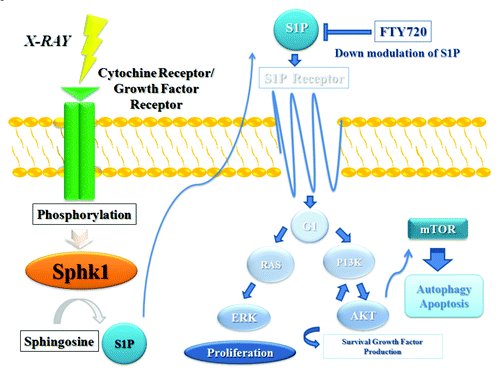Figures & data
Figure 1. Antitumor effect of FTY720 and radiation in MDA-MB 361 cells. (A) Cells were plated overnight and then exposed to radiation up to 8 Gy as indicated. Viability of cells was assessed by trypan blue assay. (B) Number of apoptotic cells was quantified by flow cytometry staining with Annexin V/7AAD after 24 h of incubation. (C) Cell viability of MDA-MB-361 treated with FTY720. Plated cells were treated with FTY720 at varying doses for the indicated times. (D) Number of apoptotic cells after drug administration at 24 h. Data are the average of three independent experiments performed in triplicate. P values were obtained using two-tailed t test. *P < 0.01.
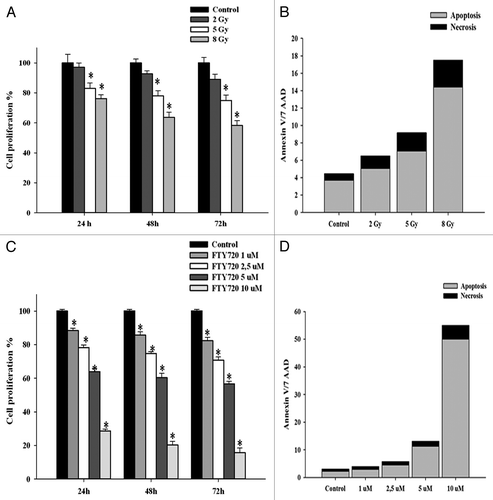
Figure 2. FTY720 sensitizes MDA-MB 361 cells to X-irradiation. Plated cells were pretreated for 1 h with FTY720 or vehicle at indicated concentration (5 uM), then exposed to 8 Gy X-irradiation. (A) Cell viability of MDA-MB 361 cells was measured by trypan blue at indicated time. (B) Apoptotic MDA-MB 361 cells after 24 h of incubation were assessed by flow cytometry after Annexin V/PI staining. Columns and points, mean of three independent experiment performed in triplicate; bars, *P < 0.01; (C–F) Observed nuclei morphological changes in MDA MB 361 cells after staining with DAPI using fluorescent microscopy with 40× magnification. (C) Untreated cells control; (D) treated cells with 5 uM FTY720; (E) treated cells with 8 Gy radiation; (F) treated cells with combination of FTY720 plus radiation.
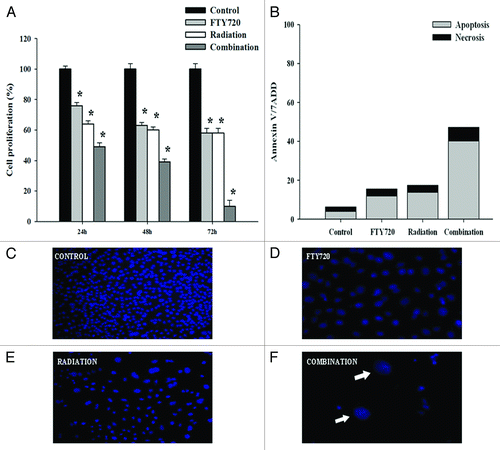
Figure 3. Effects of FTY720 or ionizing radiation as individual agents or in combination on cell cycle distribution. (A) Perturbations of the cell cycle, analyzed by flow cytometry, after 24 h exposure to single or combined treatments. The data shown are representative of the combined mean of two independent experiments. (B) p27 immunoblot, at 24 h after treatment. Standardization was performed with GAPDH stained in the same blots with anti-GAPDH antibody.
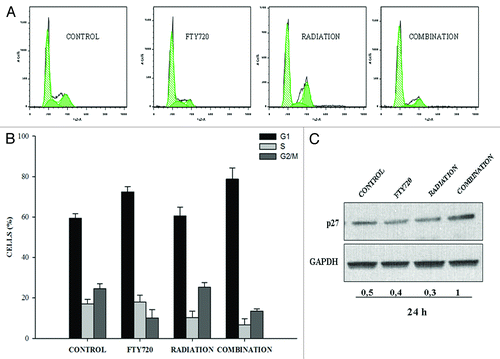
Figure 4. Combination treatment regulates the apoptotic and survival pathways. Immunoblot of pAKT/AKT and pERK/ERK, 24 and 48 h after individual or combination treatments. Standardization was performed with α-tubuline measured in the same blots with anti-α-tubuline antibody. Moreover, immunoblot of cleaved caspase 7, pro-caspase 3, and survivin at time and conditions indicated are described. The protein loading control was performed using GAPDH.

Figure 5. Combination treatment induces autophagosome accumulation in MDA-MB-361 cells. (A) To quantify fluorescent compound MDC incorporated in MDA-MB-361, cells autophagy test was used as described in Methods. *P > 0.05; **P = 0.02. (B) Western blot analysis was performed for LC3B. The equal loading of protein was confirmed by probing with GAPDH.
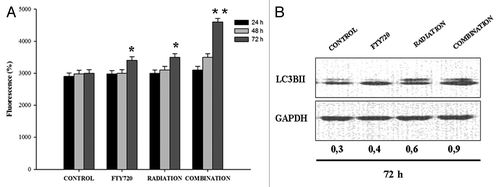
Figure 6. Explanatory cartoon of fingolimod effects on signal transduction pathways. Sphingosine kinase (SphK1) is a key regulator of the dynamic ceramide/sphingosine-1-phosphate (SP1) rheostat balance which is important in the pathological cancerogenesis, progression, metastasis process and resistance to treatments. FTY720 acts as a SphK1 antagonist reducing SP1 levels with perturbation of PI3K/AKT/mTor pathway involved in apoptosis and autophagy of the cancer cells and modulating sensitivity of tumor cells to radiation-induced cell death.
